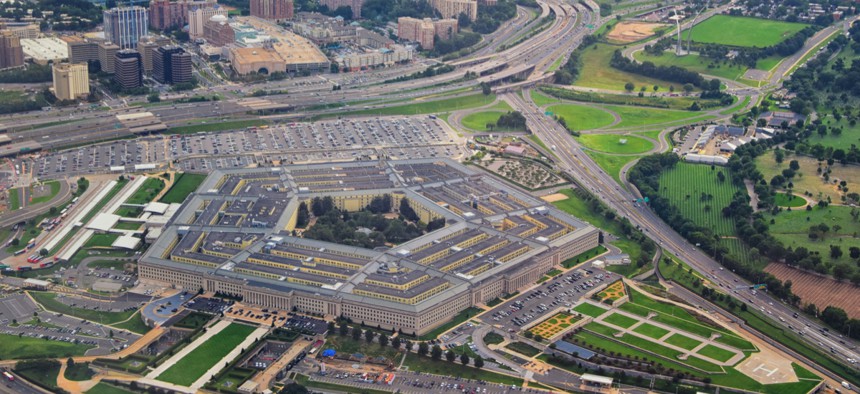It’s Official: Trump Shifts All Security Clearance Work to Pentagon

Jeremy Christensen/Shutterstock.com
An executive order renames the Defense Security Service and sets a timeline for the office to take over background investigations for the entire federal community.
After months of speculation and a standing September deadline, President Donald Trump signed an executive order Wednesday officially moving the federal government’s background and security clearance investigations to the Defense Department and giving the receiving office a new name.
After the 2015 breach of Office of Personnel Management systems that compromised sensitive personal information of more than 21 million current and prospective federal employees and contractors, the Obama administration created a new background investigation office called the National Background Investigation Bureau. But the administration also charged the Defense Department with supporting NBIB by building and managing the underlying IT systems, which would be called the National Background Investigation Service.
Congress later passed language in the 2018 defense authorization bill giving the Defense Department responsibility for meeting its own clearance needs, which make up about 70 percent of all investigations work. The remaining 30 percent of civilian agency clearances would remain with NBIB and OPM.
Rather than split that work up, the Trump administration made moves to migrate all clearance work to the Defense Department under the Defense Security Service. As the early days of planning began, officials took the opportunity to rethink the process, which hadn’t had an overhaul in more than 50 years.
With Wednesday’s executive order, the move becomes official. The order also gives the Security Service a new name: the Defense Counterintelligence and Security Agency. The Defense Secretary is empowered to change the name again or move investigations to another Defense office, but must first consult with OPM, the Office of Management and Budget and the Office of the Director of National Intelligence.
The newly named office will be taking over all background investigations work by the end of September—a schedule set well before Wednesday’s executive order—but will get to work on some aspects much sooner.
“[N]o later than June 24, 2019, the DCSA shall serve as the primary entity for conducting effective, efficient and secure background investigations for the federal government for determining whether covered individuals are or continue to be eligible for access to classified information or eligible to hold a sensitive position,” according to the order, giving the office just two months to take over the new continuous evaluation program for current clearance holders.
Continuous evaluation—part of the Trusted Workforce 2.0 initiative launched in February to overhaul the clearance process—uses public and private data sources to flag potentially compromising behavior and alert decision-makers in real-time.
That program is already assessing 1.1 million clearance holders, according to Terry Carpenter, program executive officer for NBIS, the office overseeing the technical overhaul of the investigations process.
That work will only increase after June 24, but the teams will be getting assistance. As DCSA takes over all investigations work, NBIB staff and resources will be integrated into the new office. As part of the plan, some 2,000 employees will be transferred, NBIB Director Charles Phalen told Congress in December. The executive order requires the Defense Department and OPM to have a hard plan in writing by June 24. That plan will be executed through a newly established Personnel Vetting Transformation Office at DOD.
NBIB will continue to process background investigations through the transition, but no later than September 30, according to the order.
In March, DCSA, then still the Defense Security Service, absorbed the NBIS office and its 40 employees, previously housed at the Defense Information Systems Agency.
The order also calls for the secretary of Defense to take a leading role in ensuring the underlying technology stays up to date to avoid another breach.
“The Secretary of Defense shall design, develop, deploy, operate, secure, defend and continuously update and modernize, as necessary, information technology systems that support all personnel vetting processes conducted by the Department of Defense,” the order reads.
NEXT STORY: OMB previews next steps on data policy



